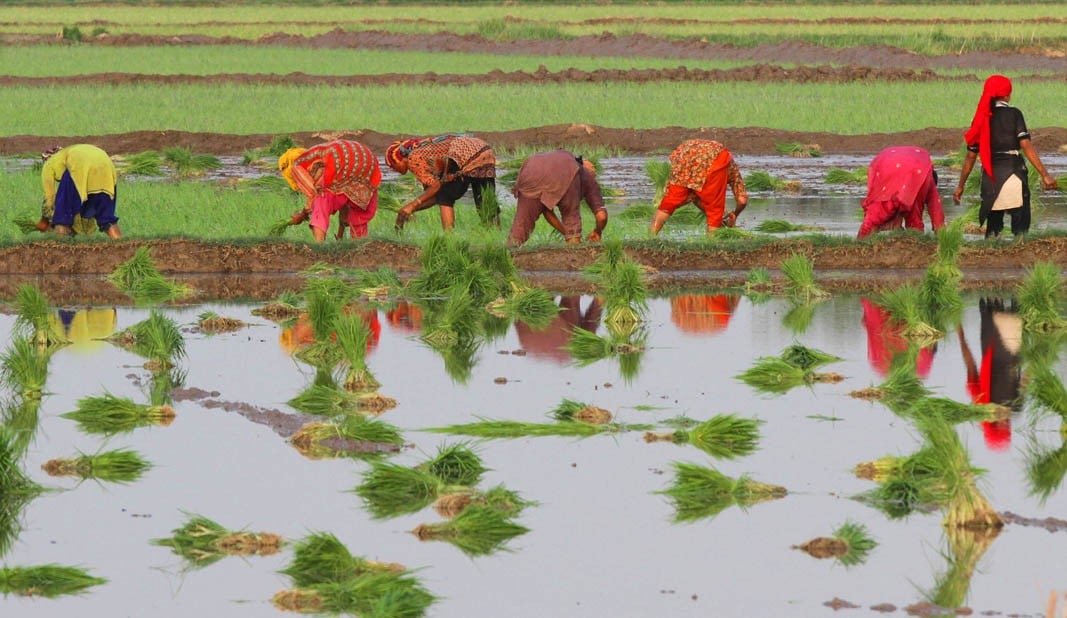Rice is one of the most widely consumed staple foods globally, with over 3.5 billion people relying on it as their primary source of nutrition. The production of rice, however, requires significant amounts of water, making it a critical component in the global food security debate. This article aims to provide an overview of the water requirements for rice production, highlighting the varying amounts needed depending on the specific crop and production methods.

The water requirements for rice production vary significantly depending on factors such as the type of rice, climate, and irrigation methods used. According to the International Rice Research Institute (IRRI), lowland rice typically requires around 1,432 liters of water to produce 1 kg of rice in an irrigated lowland production system. Other sources say that water required to produce 1 kg of rice ranges from 800 to 5000 liters, with an average of 2500 liters.

This is significantly higher than the water requirements for other crops like wheat, which typically needs around 900 liters of water per kilogram.The high water requirements for rice are largely due to the crop’s semi-aquatic ancestry, making it extremely sensitive to water shortages. Rice is typically grown in bunded fields that are continuously flooded up to 7–10 days before harvest, which helps ensure sufficient water and control weeds. This flooding process can account for a significant portion of the total water used in rice production.
In comparison to other crops, rice requires significantly more water. For example, soybeans require around 2,000 liters of water per kilogram, while potatoes require about 500 liters. Meat production, particularly beef, requires even more water, with around 5,000 liters needed to produce 1 kg of meat.
In 2020, 74% of Indonesia’s fresh water was used for irrigation to support the agricultural sector, which covers 30% of the country’s total land area. Rice is a major and essential commodity for Indonesia, as it is a staple food for almost every Indonesian.

The average of water requirements for rice in East Java from 2008 to 2011 was 35.913.244.065 m3. This value is greater than the value of water allocation is determined by the government. The estimated value of water for rice production in East Java was Rp 4.500.060 per hectare for one growing season.

According to a journal from IPB, farmers in Indonesia use 13,000–15,000 m3/ha of irrigation water during the dry season from transplanting to harvest. However, PJT II recommends 12,000 m3/ha of irrigation water.
The high water requirements for rice production pose significant challenges in regions where water is already scarce. Climate change and population growth are expected to exacerbate these challenges, making it essential to adopt efficient irrigation practices and improve water management techniques.
On the other hand, the water requirements for rice production also present opportunities for innovation and improvement. For instance, the use of precision irrigation systems and drought-resistant rice varieties can help reduce water consumption while maintaining crop yields.
In conclusion, the water requirements for rice production are significant and vary depending on factors such as the type of rice, climate, and irrigation methods used. As the global population continues to grow and water scarcity becomes a pressing issue, it is crucial to adopt efficient irrigation practices and improve water management techniques to ensure the long-term sustainability of rice production. By understanding the water requirements for rice production, we can work towards a more food-secure future while minimizing the environmental impact of our agricultural practices.